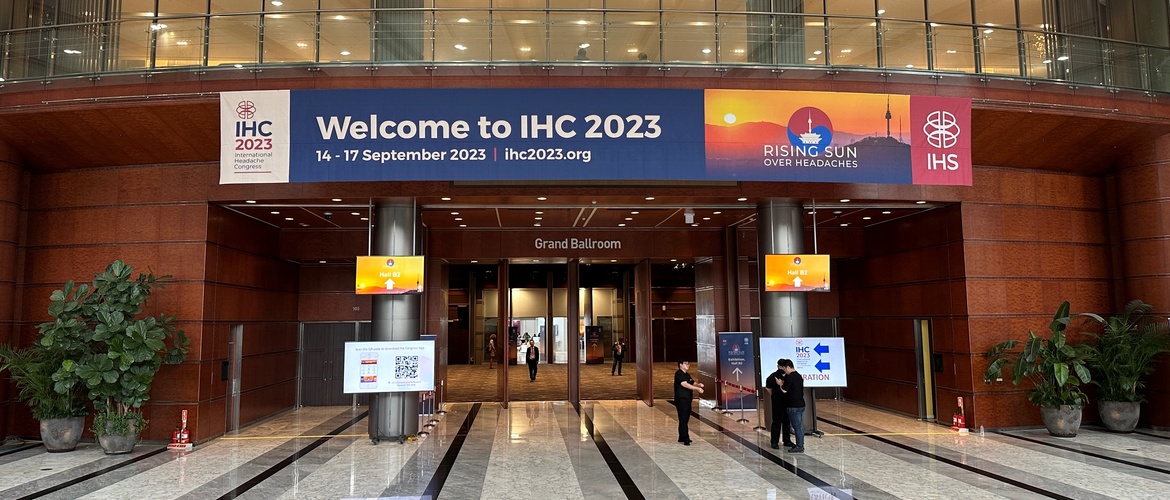
Choose a channel
Check out the different Progress in Mind content channels.

Progress in Mind

Both global and local headache-centred organisations are leading the way in understanding headache burden and how best to deliver care. At an IHC 2023 symposium, Gøril Bruvik Gravdahl, a Research Nurse at St Olavs Hospital, Trondheim, Norway, discussed the Global Campaign Against Headache, which has carried out epidemiological studies and provides resources to help healthcare professionals (HCPs) manage headache disorders in primary care. Kaori Tabata, a Headache Nurse at Tominaga Hospital, Osaka, Japan, discussed the Japanese Headache Patient Advocacy Coalition (JHPAC) who provide sessions at conferences and in hospitals where patients, including clinical staff, can share their experience of living with migraine, so as to advance HCPs understanding of the burden of this condition. In many headache services, specialist nurses have a key role in patient assessment and follow-up, with some also able to prescribe medications and devise treatment plans. Jennifer Trouerbach, a Headache Nurse at Leiden University Medical Centre, The Netherlands, and Susie M Lagrata an Advanced Nurse Practitioner/Lead Nurse in Headache and Neuromodulation at The National Hospital for Neurology and Neurosurgery, London, UK, here provide vital insights into the role of the headache nurse and setting up of nurse-led headache services.
The Global Campaign Against Headache
Lifting the Burden: The Global Campaign Against Headache (GCAH) is an independent organisation that includes academic institutions and headache societies.1 The strategic objectives of the GCAH include ‘knowledge for awareness,’ ‘awareness for action,’ and ‘action for change.’1,2 The knowledge for awareness stage included documenting the problem of headache globally and conducting epidemiological studies including those on populations, schools, workplaces, outcome measures, healthcare professional (HCP) education, and interventions.1,3
Resources are available to help primary care practices diagnose and treat headache4,5
Results fed into the next stage, ‘awareness for action,’ which were utilised to raise awareness among healthcare providers, health policy makers, and people experiencing headache.1 Findings also led to publication of the ‘ATLAS of headache disorders and resources’4 and the resource ‘Aids to management of headache disorders in primary care (2nd edition).5 The final stage, ‘action for change,’ has a focus on healthcare solutions including a template for structured headache services that can be adapted to local needs.6-8
Headache care in Japan
The Japanese Headache Patient Advocacy Coalition (JHPAC), established in 2017,9 holds meetings at conferences where patients can share their experience of living with migraine with HCPs. Currently, Ms Tabata reported, 25 such forums have been conducted. They also host peer-to-peer sessions to help “create more accessible communications with patients.”
Patient testimony of living with migraine can aid in healthcare professional understanding
Next, Ms Tabata highlighted the high incidence of migraine in nurses in Japan.10 “Creating an environment where nurses with migraine can work is a challenge,” she said. Trigger factors for migraine, including lack of sleep, overwork, light, noise, and tension,11 may all occur in a person’s work as a nurse and could, Ms Tabata hypothesised, lead to nurses leaving their careers if they are worried about making mistakes at work. “I believe,” said Ms Tabata, “that addressing migraine issue in the nursing and medial field is an urgent matter.” To aid this, Ms Tabata described the multidisciplinary headache team at her hospital, which includes nurses, clinicians, physiotherapists, clinical psychologists, and support staff, provides a course for staff who have been troubled by headaches.
The role of a headache nurse
The headache nurses’ role, explained Ms Trouerbach, may include:
Shared decision-making was also discussed by Ms Trouerbach, who highlighted how “expectations should be spoken so we have the same goals. If the patient is aware of the possibilities of the treatment plan, there’s less anxiety and insecurity and the patient regains control of their life.”
Headache nurses can use shared decision-making to help patients agree on goals for headache treatment
Ms Trouerbach also reported how her hospital has an online system so the patient can, at any time, send a question to the team about their condition or medication instead of needing to wait for a consultation. She highlighted that for monitoring purposes, digital diaries can be filled in by the patient at home, then sent daily to the treatment team so it is at hand immediately prior to and during a consultation.
Advancing roles of headache nurses
Ms Lagrata described how “headache nurses have developed as complementary and integrated parts of a multidisciplinary team. . . and should be optimally utilised for the benefit of patients.” Headache nurses have a particular role in follow-up clinics for patients, where they can assess current and ongoing level of disability and can provide support and advice with regard to lifestyle issues and self-management.
Nurse-led headache clinics can provide treatment and follow-up services for patients
There are a handful of entirely nurse-led clinics where nurses diagnose, prescribe medications, as well as treatments such as onabotulinumtoxinA and peripheral nerve blocks, educate patients, and follow-up on their care. Evidence show these are safe and cost-effective.12,13 However, there may be barriers to setting up nurse-led headache services, Ms Lagrata discussed. In her experience, this included opposition from professional bodies regarding treatment administration, managing waiting list capacity, patient compliance, and logistical barriers such as clinic space.
Our correspondent’s highlights from the symposium are meant as a fair representation of the scientific content presented. The views and opinions expressed on this page do not necessarily reflect those of Lundbeck.